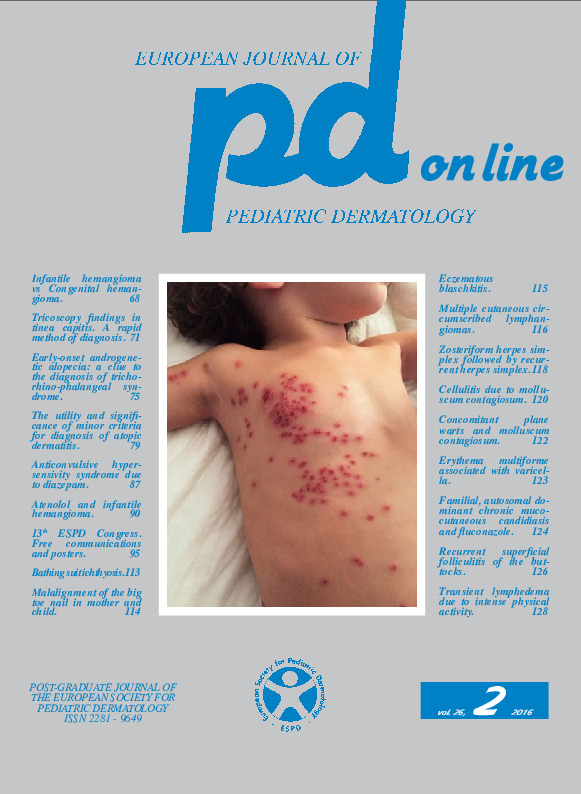Eczematous blaschkitis.
Downloads
DOI:
https://doi.org/10.26326/2281-9649.26.2.1233How to Cite
Bonifazi E. 2016. Eczematous blaschkitis. Eur. J. Pediat. Dermatol. 26 (2): 115. 10.26326/2281-9649.26.2.1233.
pp. 115
Abstract
The lesions distributed according to the lines of Blaschko assume a condition of mosaicism, i.e. the existence of an already present at birth cell clone, different from other skin cells.This diversity of the cutaneous clone can be already evident from the earliest ages of life and manifest the features of a hereditary disease, for example incontinentia pigmenti, or of a nevus malformation, for example epidermal verrucous nevus.
When as in this case the lesions are acquired, are located on only one segment of skin and are eczematous in type, it is reasonable to think that the different cell clone is originated by a de novo post-zygotic mutation of one of the genes responsible for atopic dermatitis as occurring in mosaicism type 1.
Three similar cases have been already described in the relevant literature (1, 2, 3).
Keywords
Blaschkitis, atopic dermatitis

